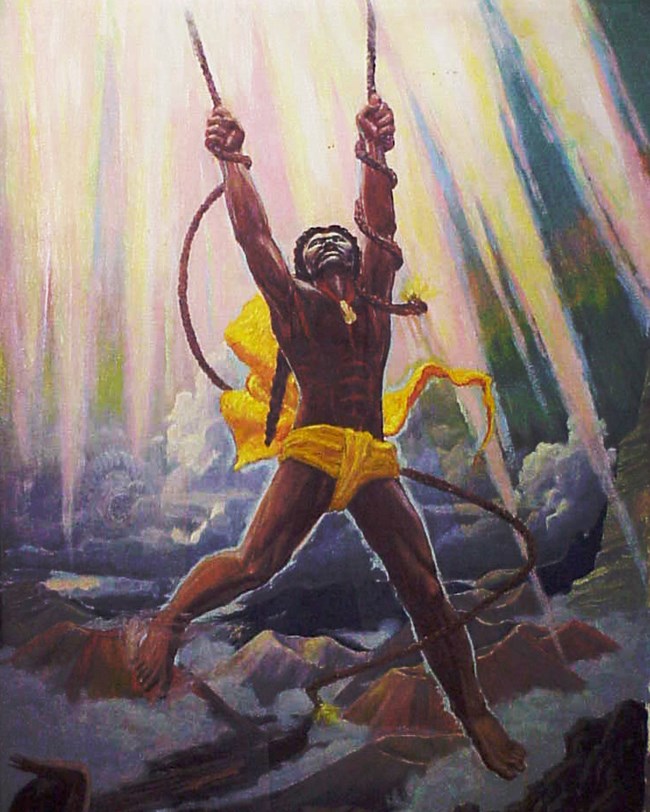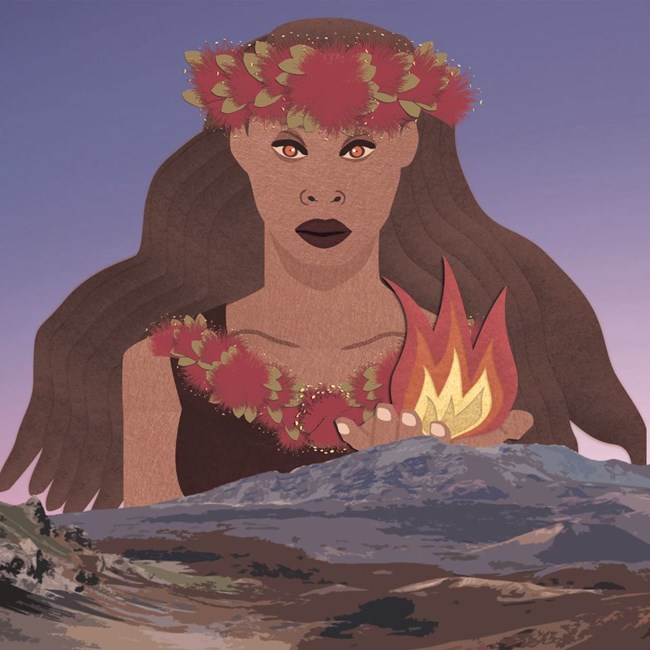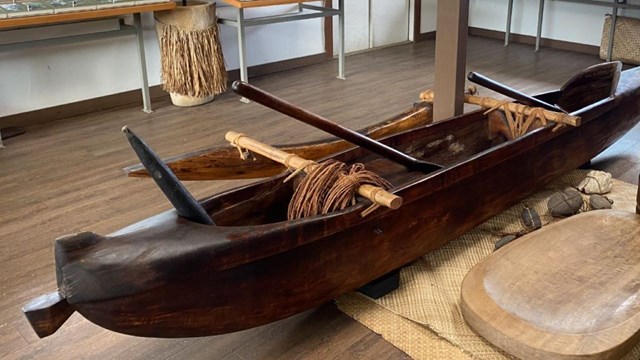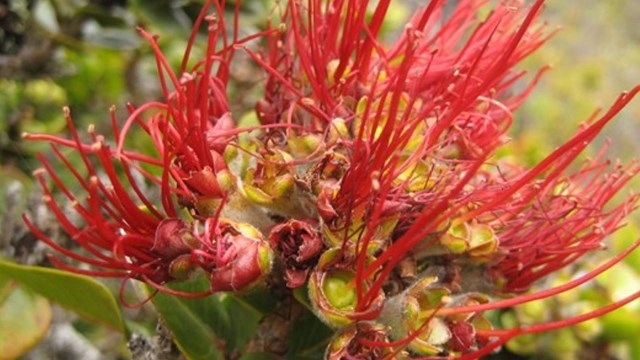
Painting by Paul Rockwood Māui Snaring the SunThe Māui myths are known to many cultures throughout the pacific. His most famous deeds include fishing up islands, obtaining fire, and snaring the sun. The version told here in Hawaiʻi of Māui capturing and slowing ka lā (the sun) involves Hale-a-ka-lā, the house-of-the-sun. The natural phenomena of the sun’s movement across the sky is explained in the Hawaiian mo‘olelo of Māui snaring the sun. 
Pele- Ka wahine ‘ai honua (The earth-eating woman)The rocks that you see here at Haleakalā are not just clusters of minerals created over millions of years by lava. To the Hawaiians, these rocks are the physical form of one of the most respected goddesses in the Hawaiian culture, the volcano goddess Pele. Pele is both praised and feared by the people of Hawai‘i. She may destroy everything in her path, but Pele is also a creator of lands. Pele has many kino lau (forms) and one of them is the lava that bleeds from the earth. You can see Pele in action today at Halema‘uma‘u crater on Kīlauea. 
NPS Photo Menehune and LakaOne day a child Laka-a-wahieloa was born in Kīpahulu to a chief named Wahieloa and his wife Hinahawea. They adored their son, and some years later Wahieloa went to Hawaiʻi to acquire a toy for his son and was killed in a cave called Keana-a-Kaualehu. 
Significant People
Explore the stories behind significant Hawaiian figures 
Natural Phenomenon
Discover the stories behind the natural features of Hawaiʻi |
Last updated: August 4, 2022
